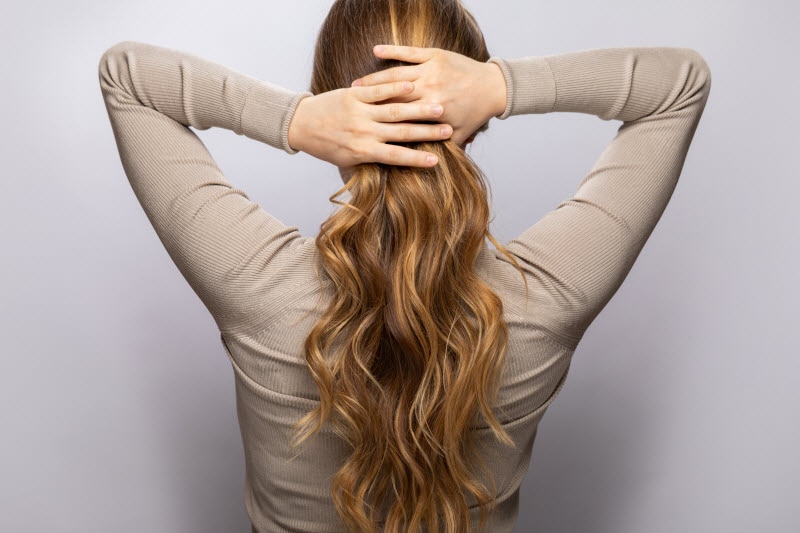Hair care is often skincare’s neglected distant cousin, grabbing none of the attention that skincare tends to get. But hair care deserves your vigilance too—the Environmental Working Group identified chemicals in hair care products that may adversely affect human health and the environment. For example, in many hair products geared toward African-Americans, they identified hormone-containing hair products linked to early puberty in children and higher rates of several different types of cancer in hair salon workers.
All the skin and hair care products we use add up—even trace amounts of toxic chemicals can accumulate in our bodies and add to our body burden of toxins. It’s tough as a consumer trying to figure out the skinny on which ingredients significantly reduce exposure and which are relatively benign.
Here’s our shortlist of the most harmful chemicals to watch out for in hair care. Caveat emptor: Some of the chemical ingredients listed in personal care products are actually just fancy names for everyday ingredients, so hopefully this will help you focus on the key players and not succumb to chemophobia. No need to worry about sodium chloride, for example, which is really just salt used to thicken your shampoo.
Ingredients to Avoid in Hair Products
1. Sodium lauryl sulfate and sodium laureth sulfate
Currently, sulfates are hair care’s chemical enemy No. 1. Cheap lathering detergents, up to a few years ago they were ubiquitous in most conventional shampoos. But since 2009, L’Oréal Paris has released two drugstore lines that boast prominently on the packaging of being “sulfate-free.” Loreal’s embrace of the no-sulfate badge boosted public awareness about the dangers of sulfates, which in combination with other chemicals can form nitrosamines, a deadly class of carcinogen. Exposure causes eye damage, depression, diarrhea and many other ailments.
In the effort to ditch sulfates, a lot of companies switched over to the ammonium versions—not that they are much better. Sodium and ammonium laureth sulfates are known cancer-causing ingredients, as are any ingredients ending in ‘eth.’ Instead, look for anything with the words “glucose” or “glucoside” in them—for example, sodium lauryl glucose or lauryl glucose.
2. Coal tar hair dyes and other coal tar ingredients (including aminophenol, diaminobenzene, phenylenediamine)
Coal tar, a byproduct of coal processing, is a known human carcinogen, according to the National Toxicology Program and the International Agency for Research on Cancer. Unfortunately, hair stylists and other professionals are exposed to these chemicals in hair dye almost daily but a green hair salon movement is firmly underfoot. Meanwhile, Europe has banned many of these ingredients in hair dyes. While FDA sanctions coal tar in specialty products such as dandruff and psoriasis shampoos, the long-term safety of these products has not been demonstrated. Exposure can cause mild dermatitis, vision issues, headache, dizziness and labored breathing. One quick tip for determining if a product contains coal tar—is the shampoo bright green or blue? Very likely it contains a coal tar color.
3. Propylene glycol
Propylene glycol is used in many styling gels, conditioners, and shampoos as well as, wait for it—the active ingredient in antifreeze. Direct contact can cause brain, liver, and kidney abnormalities. The EPA requires workers to wear protective gloves, clothing, and goggles when working with it. And yet, the FDA has classified it as safe for food—go figure.
4. Imidazolidinyl urea and DMDM hydantoin
These chemicals are a known human carcinogen and have a toxic impact on developmental and reproductive systems. Used to prolong shelf life, these formaldehyde donors, or formaldehyde derivatives, are also used to preserve corpses and body parts. Some hair straighteners are based on formaldehyde’s hair-stiffening action and release substantial amounts of the chemical.
This list is by no means comprehensive—it’s just a wakeup call to pay attention to what may be lurking in your skincare products (and food, for that matter). It’s hard out there for the consumer, especially when even the word organic on the label doesn’t necessarily mean free from petrochemicals. If skincare is certified organic, however, you have much more assurance about what’s inside.
More and more big box retailers, such as Walmart and Target, are coming out with their own personal care standards with the aim of moving suppliers away from the most harmful chemicals. Until all of the definitions are hammered out, a great resource to check out products is the EWG’s Skin Deep Cosmetic Safety database. You can also trust Vitacost’s Beauty & Personal Care selection for products free of toxins.

